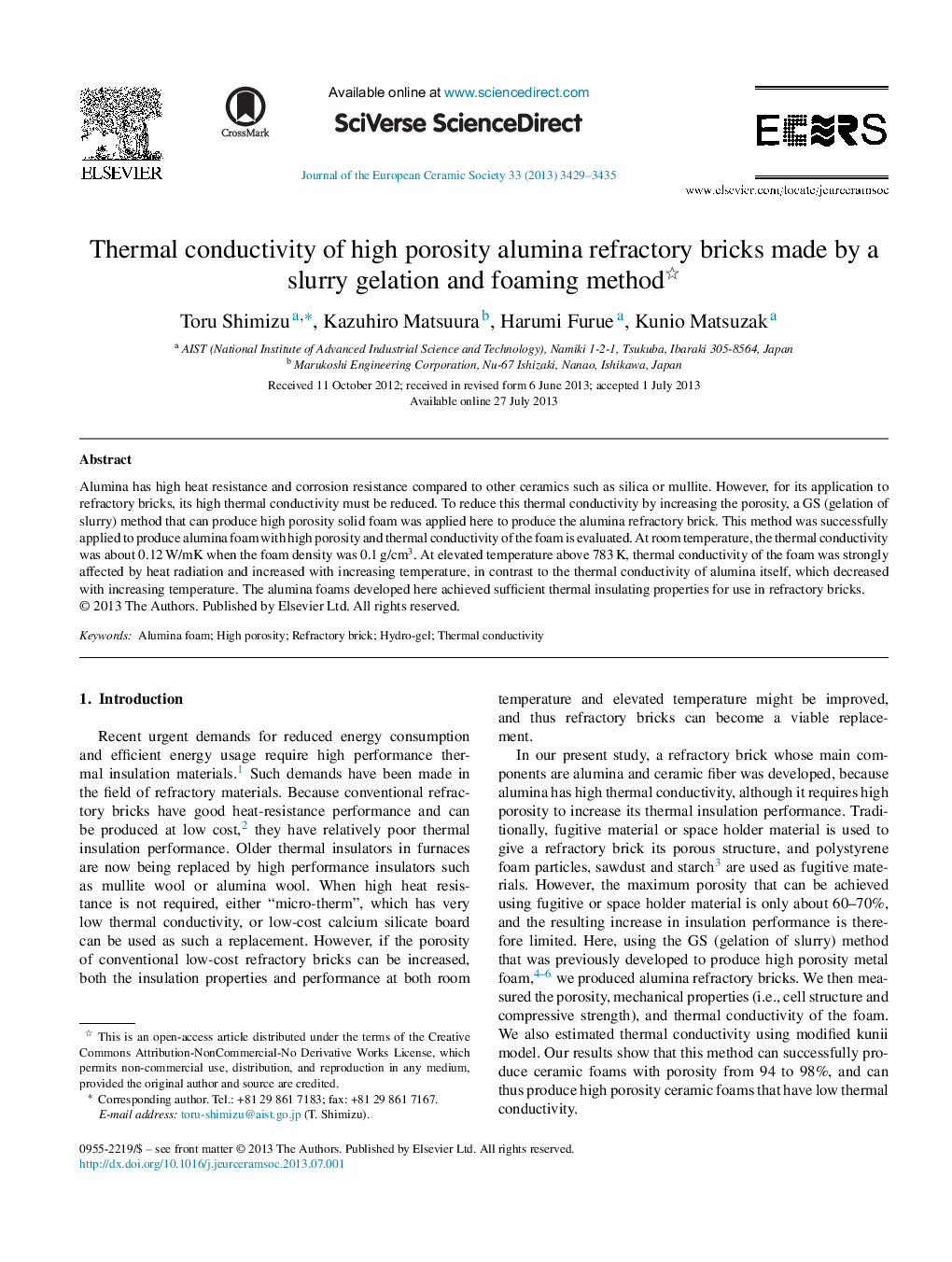| Article ID | Journal | Published Year | Pages | File Type |
|---|---|---|---|---|
| 7899231 | Journal of the European Ceramic Society | 2013 | 7 Pages |
Abstract
Alumina has high heat resistance and corrosion resistance compared to other ceramics such as silica or mullite. However, for its application to refractory bricks, its high thermal conductivity must be reduced. To reduce this thermal conductivity by increasing the porosity, a GS (gelation of slurry) method that can produce high porosity solid foam was applied here to produce the alumina refractory brick. This method was successfully applied to produce alumina foam with high porosity and thermal conductivity of the foam is evaluated. At room temperature, the thermal conductivity was about 0.12Â W/mK when the foam density was 0.1Â g/cm3. At elevated temperature above 783Â K, thermal conductivity of the foam was strongly affected by heat radiation and increased with increasing temperature, in contrast to the thermal conductivity of alumina itself, which decreased with increasing temperature. The alumina foams developed here achieved sufficient thermal insulating properties for use in refractory bricks.
Keywords
Related Topics
Physical Sciences and Engineering
Materials Science
Ceramics and Composites
Authors
Toru Shimizu, Kazuhiro Matsuura, Harumi Furue, Kunio Matsuzak,
